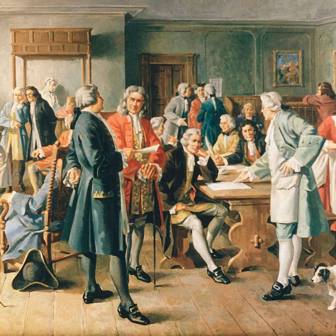Among the many gems secreted in the Earle Page papers held by the National Library of Australia is the first-ever federal coalition agreement between a conservative rural party and a conservative urban party. Drafted in the spindly handwriting of Stanley Bruce in February 1923, it concluded negotiations the city-based Nationalist Party leader had conducted with Page in his guise as Country Party leader, thus resolving the indecisive outcome of the federal election of late the previous year. Rarely seen and of no material value in itself, it marks the start of the nation’s most important party-political partnership.
Anyone pondering whether this venerable arrangement should now be ditched would be well advised to take the wisest starting point for just about everything — look at the history. How and why an idea was sparked, along with its record in practice, tells us much about what stands to be lost. There is immense significance in the simple fact that a coalition between what was originally the Country Party — today’s Nationals – and the Nationalists who became today’s Liberals has been part of our political furniture for more than a century, albeit with some temporary breakages.
The most immediate consequence of the 1923 agreement was to make Bruce prime minister, with Page as his treasurer and deputy. Page was more chief proponent than originator of a coalition strategy. The Reid–McLean government of 1904–05 had shared out portfolios between Free Traders and conservative Protectionists, and at state level the WA Country Party had joined an anti-Labor coalition in June 1917. In what was formally dubbed the Bruce–Page government, the two parties retained their separate identities, with the Country Party bagging a hefty five out of eleven portfolios. Page reportedly “regretted” being unable to consult all his Country Party MPs in advance of concluding this triumph.
Bruce and Page reaffirmed the coalition the following year via a further pact that discouraged the two parties from running against each other in House of Representatives seats and stipulated that, where they did so, they would exchange preferences. Page had to overcome some serious internal opposition from his party peers, notably in Victoria, a hotbed of rural radicalism that took years to unite behind the coalition idea.
As Bruce Graham later wrote about Page in The Formation of the Australian Country Parties — the finest work of Australian political history you’ve never heard of — “nothing showed his skill in leadership as much as his efforts, in the months following the formation of the coalition, to persuade the Country Party movement to accept it.”
The key point here is that Page considered a coalition the surest way to actually get things done, far better than leading a mere protest party stuck on the crossbenches. He wanted to secure better services for the countryside, but also to pursue his very personal agenda for re-engineering the Australia nation with an idiosyncratic mixture of regional government structures, hydroelectricity, indicative economic planning and cooperative federalism. Page had no doubt about the benefits of being inside the tent: “we were determined to use our opportunities to the full,” he later recalled. He could soon point to such tangible gains as the abolition of federal land tax on Crown leaseholds, protection of rural industries, improved rural telephone services, tied Commonwealth grants for rural roads, and the Commonwealth Bank’s Rural Credits Department.
Bruce, for his part, was rather more Delphic about what precisely he hoped to achieve beyond securing the government he would soon head. The significant point for his own side of the conservative divide is that for decades after he departed the prime ministership in 1929 the successor entities to his Nationalist Party usually accepted coalition as fundamental to forming government. Exceptions were Joe Lyons’s first term in office, 1932–34, and part of Menzies’ unhappy first prime ministership of 1939–41. Even when Malcolm Fraser won such massive majorities in 1975 and 1977 that he could have formed Liberal-only governments he chose instead to go into coalition.
All this, surely, tells us something significant — to wit, that there has long been a near consensus of both major conservative parties that coalition is the way to go. Why so?
The short answer is that “it works.” In fact, the Nationals probably owe their survival beyond their formative years to having joined a coalition. Agrarian protest movements had sprung up in the United States, Canada and Australia during the late nineteenth century in rural communities stressed by fluctuating wheat prices, rapid economic change, disregard by the big cities and (in North America) clashes with powerful privately owned railways. Most soon faded away, but their sentiments were revived in the early decades of the twentieth century by some more politically ambitious groups, notably the Non-Partisan League in the United States and the Canadian Progressive Party. Yet both — lacking the necessary political skills and coherent doctrine — died slow deaths.
In far off Australia, though, being in coalition gave the Country Party and its successors a secure presence in government. As initial resentment of government intervention morphed into demands for ongoing government support, its practical relevance was signalled for all to see. Hard as it always is to be confident about what would have happened under different circumstances, it seems highly likely that an ongoing and direct role in government gave the Country Party more influence than it would otherwise have exercised. And would so many rural voters have maintained their loyalty to a standalone minority party with no direct say in government?
In the longer run, the Coalition — by this stage a capital C is warranted — provided a balanced formula for maintaining the Country Party’s separate identity while simultaneously ensuring this secure role in government. The necessities of the arrangement also trained its leaders in the practical arts of governance and politics. Would such savvy individuals as Black Jack McEwen, Doug Anthony and John Anderson have otherwise ever arisen? As Paul Kelly opined in The End of Certainty, “the entire reputation of the great National Party leaders was based upon their ability to win through the Coalition an influence beyond their numbers.”
All this also helps explain why, at least nationally, amalgamation with their urban confreres has been rejected by the rural conservatives. This is despite proposals in 1931–32 and a rather nominal offer from Menzies in 1944, plus occasional thought bubbles emanating from some former party leaders. Amalgamation is still occasionally floated, but remains a misplaced response to problems that mostly arise not from organisational overlap but from shortcomings in performance.
So much for the Country Party and its later manifestations. What about the senior partner? Would the Liberals be somehow liberated by announcing that they are putting on ice the firm understanding that any eventual return to government would be in coalition?
Again, let’s do a quick survey of the history. First and foremost, only rarely have the federal Liberals matched Fraser’s achievement of having the numbers in the House of Representatives needed to rule alone. No Coalition would almost certainly mean their having to govern as a minority party. They would still have to persuade the Nationals to offer their consistent support in the House, minus the discipline imposed by a formal agreement.
And they would have to deal with rural voters directly themselves, despite being largely city-based. At state level, Henry Bolte managed this well enough to help his Victorian Liberals govern alone for seventeen years straight but he was a rare bird indeed, a proud and assertive country boy who lived on his own sheep farm. Even he clashed repeatedly with the Country Party, especially when trying to get bills through the upper house, and resorted to appeasing its leadership.
All this said, might a temporary separation while in opposition not do too much lasting damage? After all, such splits occurred at times in the past when Labor held power in Canberra, and were eventually healed, albeit after considerable angst. But how much would be gained by risking this, especially given the difficulty of recreating what has been broken?
If the Libs do happen to feel so unduly inhibited by the Nationals as to propose a trial separation devoted to reflection and party reconstruction, then their problems are essentially lack of fortitude, and inadequate negotiating skills. Neither would be likely to be solved by effectively walking away. And don’t even mention the carnage of the one-sided break that occurred in 1987 courtesy of the Joh for Canberra saga.
There are also potential national interest benefits, well above mere party politics, arising from the Coalition. First and foremost, having no Coalition would risk a reversion to a three-party system. Yet again, consider the history. Australia endured such a scenario at the national level during the first several years after Federation, a time of unpredictable chopping and changing between mostly weak governments.
Look also at Victoria’s unprepossessing three-party political history from the 1920s up to the advent of Bolte’s majority Liberal government in 1955: short-term governments, party splits, gross electoral malapportionment and some truly weird alliances of convenience that included Country Party governments kept in office by Labor Party support in return for legislative concessions.
Secondly, the Coalition has also been a major means of managing one of the perennial issues of Australian public life, the divide between the big cities and rural Australia. This greatest of all our tyrannies of distance might partly be a matter of perception, but even so the expectation that the Nationals will be part of any conservative federal government and provide the deputy prime minister helps make for a more united and hence stronger nation.
Complementarity is perhaps the start point for any successful partnership. To the extent that the Nationals remain sectoral in nature by representing the interests of rural Australians while the Liberals mainly look to the cities, the two parties fit well enough as partners, even if not to the extent required for all-out amalgamation.
The Nationals’ populist origins and very defined constituency are still evident in their usual attitude to economic reform, the most frequent point of tension with the Liberals. A rural base gives the party a sense of purpose that amalgamation would dissolve, with country Australia feeling left in the lurch. As signalled by the past few elections, the National Party shows little sign of fading away naturally, as was once commonly foreseen — a remarkable achievement for which it gets too little credit.
Against the great weight of all this history, the recent defection of Jacinta Nampijinpa Price is not of itself an immediate game changer. Most past such defections passed without shaking the relationship between the two parties. A former Country Party leader, the incandescently cantankerous Archie Cameron, switched to the Liberals and became speaker of the House during the 1950s, while future Liberal prime minister John Gorton began his political life with the Country Party.
Is the Coalition messy and built on compromise? You bet it is, but so is nearly all democratic politics, along with so much else in life. Both parties are best advised to ponder their history, learn from it, and look to the long run amidst mutual respect. Not for nothing did Menzies on his retirement in 1966 describe the stable relationship with the Country Party during his second prime ministership as one of his foremost achievements. •




